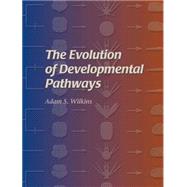The contemporary field of evolutionary developmental biology is still a new subdiscipline of evolutionary biology, but it deals with some very old questions: how shape and form in complex organisms change during evolution. Integral to this subject are developmental genetics and molecular biology, and, increasingly, systematics, paleontology, and population genetics as well. The integration of the latter three subjects into evolutionary developmental biology is still in its early stages, however. A principal aim of this book is to introduce upper-level students and biologists in other disciplines to this field, and to present it within its larger context.
Despite the excitement about "evo-devo," it is a field that still lacks a set of formal principles of the sort that, for example, inform and give shape to population genetics and systematics. The second principal purpose of this book, therefore, is to suggest a useful general framework for thinking about developmental evolution. The book's organizing concept is that of the genetic pathway, the sequence of requisite genetic and molecular activities that underlie a developmental process. From this perspective, the author explores the nature of the genetic, molecular, and selectional events that alter these pathways, yielding developmental change.
The book is organized into three major sections. The first five chapters deal with the history of the field, the data it employs, and basic ideas that inform current research. The next three chapters are devoted to case studies in developmental evolution, starting with examples of currently favored model systems (e.g., Drosophila melanogaster) and building outward. Six subsequent chapters address questions and problems in the field and key questions for the future. Three appendices on specialized topics and a glossary complete the book.








